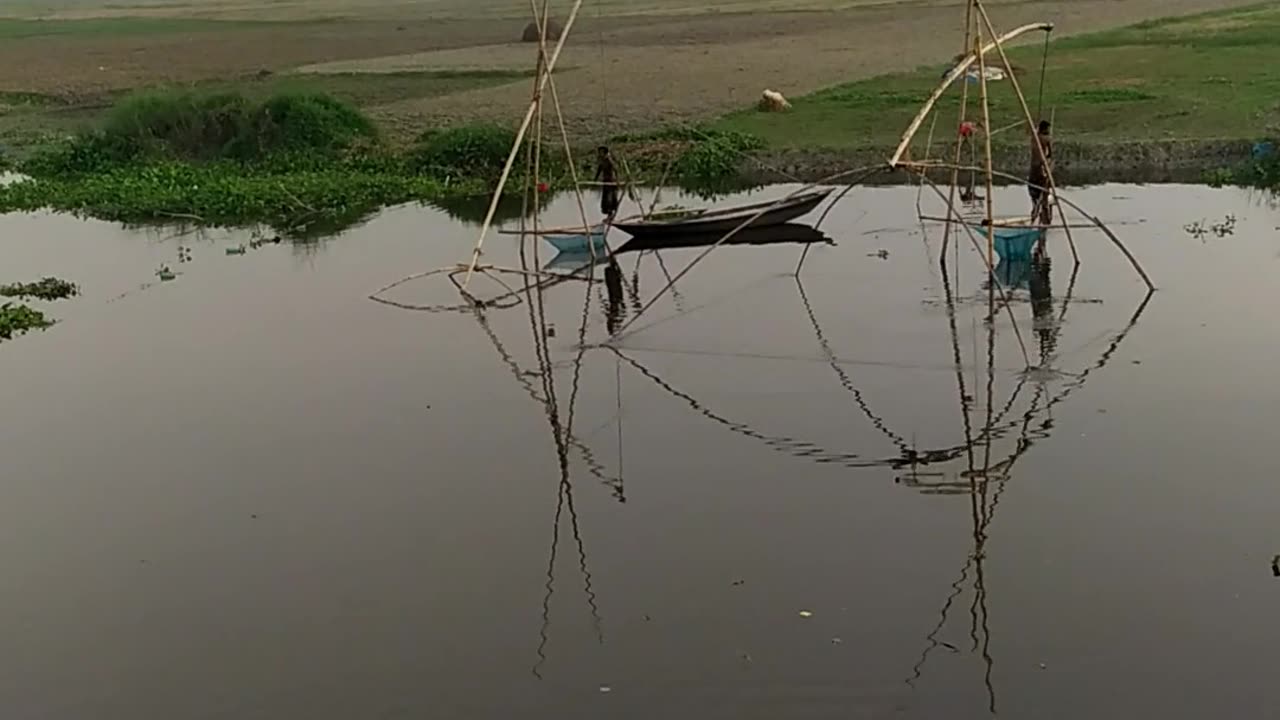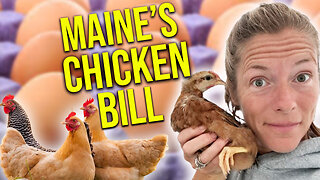Premium Only Content

Fish farming, also known as aquaculture
Fish farming, also known as aquaculture, is the practice of cultivating fish or other aquatic organisms in controlled environments such as tanks, ponds, or cages. It is a method used to meet the growing demand for fish as a food source, alleviate pressure on wild fish populations, and reduce overfishing.
In fish farming, fish are raised in a controlled environment where water quality, temperature, and feeding can be regulated. The process typically involves the following steps:
1. Broodstock Selection: Healthy adult fish with desirable traits are selected as broodstock, ensuring genetic diversity and productivity.
2. Spawning: The selected broodstock are induced to spawn, and the fertilized eggs are collected and incubated in hatcheries.
3. Larval Rearing: Once the eggs hatch, the larvae require special care, including appropriate water conditions, feeding, and protection from diseases.
4. Nursery Rearing: The young fish, known as fry or fingerlings, are transferred to nursery ponds or tanks for further growth until they reach a suitable size for transfer to grow-out systems.
5. Grow-out Systems: The fish are transferred to larger tanks, cages, or ponds where they are reared until they reach marketable size. Feeding, water quality management, and disease control are crucial during this stage.
6. Harvesting: When the fish reach the desired size, they are harvested using various methods such as netting, seining, or draining ponds. The fish are then processed and prepared for distribution and sale.
Fish farming can involve various species, including freshwater fish like tilapia, catfish, and trout, as well as marine species such as salmon, sea bass, and shrimp. Different farming methods are used depending on the species and the available resources.
It's worth noting that sustainable fish farming practices aim to minimize environmental impact, optimize feed efficiency, and prioritize the welfare of the farmed fish. These practices include efficient waste management, responsible sourcing of feed ingredients, disease prevention measures, and minimizing the use of antibiotics or chemicals.
Overall, fish farming plays a significant role in meeting global seafood demand, providing a controlled and sustainable alternative to wild fish capture.
-
 58:04
58:04
Candace Show Podcast
2 hours agoSHOCKING! How Slavery Supplies Your Grocery Store | Candace Ep 186
18.8K26 -
 19:55
19:55
Consensus by CoinDesk
2 hours ago $6.73 earnedLive from Consensus 2025 - Rumble, Crypto & Freedom
100K2 -
 38:10
38:10
Kimberly Guilfoyle
4 hours agoThe Trump effect, live with Jarrett Stepman & Mike Davis | Ep222
21.4K1 -
 2:19:32
2:19:32
The Quartering
5 hours agoInfoWars Murderer Arrested, Woke Harvard In Huge Trouble, Popes Based Bro, Mom Funds School Shooter
389K39 -
 13:51
13:51
SantaSurfing
1 hour ago5/14/2025 - President Trump Qatar Trip Highlights
5.2K2 -
 LIVE
LIVE
LFA TV
20 hours agoLFA TV LIVE STREAM - THURSDAY 5/15/25
2,916 watching -
 1:29:28
1:29:28
Untamed Nation
2 hours agoTRUMP VS BIDEN LANDING IN QATAR ⚠ HUGE DIFFERENCE‼ Joe Oltmann and Matt Wallace | 15 May 2025
7.93K3 -
 1:20:47
1:20:47
The HotSeat
2 hours agoReparations and Anchor Babies: Two Lies America Keeps Telling Itself
19.8K9 -
 40:49
40:49
Alison Morrow
3 hours agoMaine's "chicken bill" regulates backyard flocks || Sam Bessey
25.4K19 -
 DVR
DVR
Tommy's Podcast
16 hours agoMedal of Honor Dispute | Rob Harrison (TPC #1,747)
21.3K4